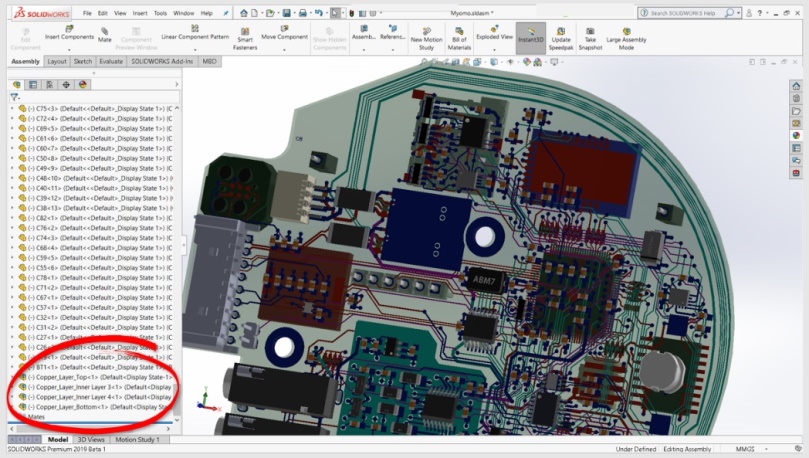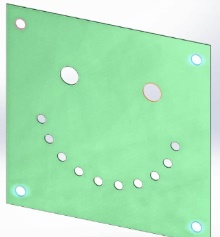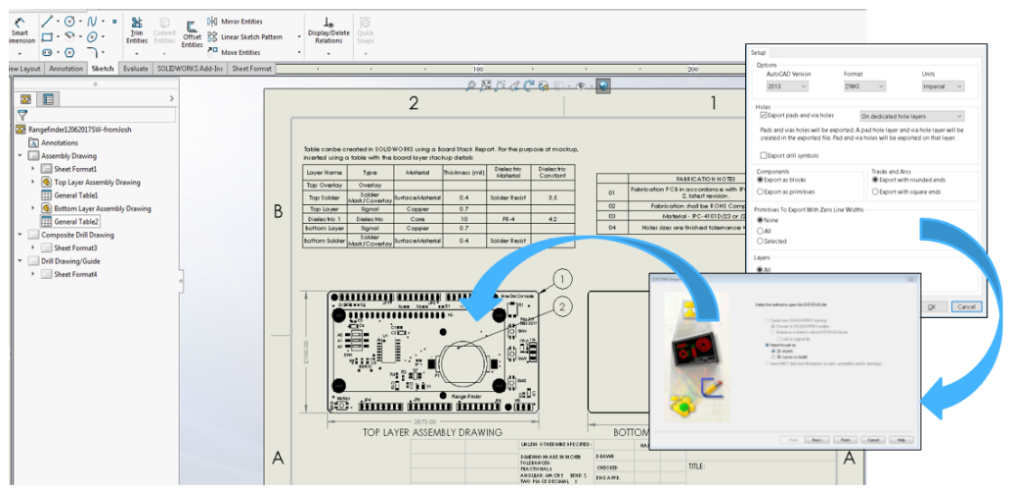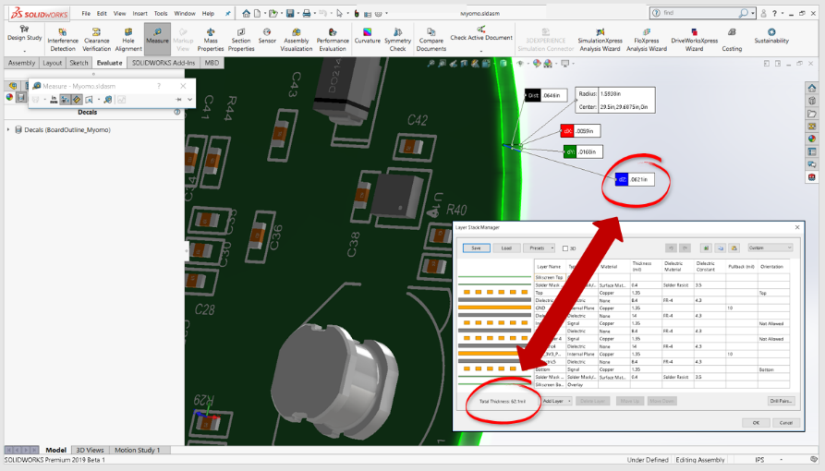- What is SOLIDWORKS PCB
- What's New in 2020
- What's New in 2019
- Why Nine Dot Connects
- Avoiding Buyer's Remorse
- Why SOLIDWORKS PCB
- Who should use SW PCB
- What is your usage model?
- What to expect from Support
- What is SW PCB Connector
- SWPCB Connector Installation
- Creating a Managed Project
- How-To & Videos
- Downloads
- Technical Support
- Webinar of the Month
- Student Reviews
- SOLIDWORKS PCB Training
- PCB Foundations Training
SOLIDWORKS PCB Declared EOL
What's New in SOLIDWORKS PCB 2019?

On July 28, 2021, Dassault Systems announced that it is discontinuing the SOLIDWORKS PCB product.
The 2019 version of SOLIDWORKS PCB has brought collaboration to a new level. Past versions were limited to board shapes and component movement. The new version enhances the existing capabilities while adding new features, making collaboration between the electrical and mechanical sides even more fluid and powerful.
Support for Copper Traces, Pads, and Polygons from ECAD to MCAD - In prior versions, the passing of primitives from SOLIDWORKS PCB or SOLIDWORKS Connector to SOLIDWORKS CAD was limited to boards and components. With 2019, polygon pours (large copper areas), traces, and footprints of the component can now be imported. Importing these copper features into SOLIDWORKS CAD helps avoid placing components in areas that would make copper routing difficult or impossible.
Two options are provided based on the end user's need to limit the amount of information (and time) needed to be pushed between SOLIDWORKS PCB and SOLIDWORKS CAD.
- Option 1 - Decals are 'stickers' placed on the board in SOLIDWORKS CAD. They are used for imagery, reference, and visualization.
- Option 2 - For those needing the actual copper primitives so additional simulation may be performed in SOLIDWORKS CAD, solid model copper can be imported for all layers.


Support for Multi-Contour Hole Sketches - In the past, creating board holes in SOLIDWORKS CAD had to be handled in a specific manner. In 2019, both extrusions and Linear Patterns in SOLIDWORKS CAD can create holes in the PCB board.
Support for Silkscreen, Solder Mask, and Solder Paste from ECAD to MCAD - For those wishing to use SOLIDWORKS CAD for document creation for PCB manufacturing, layers such as silkscreen, solder, and solder paste can be imported from SOLIDWORKS PCB and SOLIDWORKS Connector into SOLIDWORKS CAD.

Support for Flipping Components between MCAD and ECAD - In prior versions, the flipping of components to the bottom side of a PCB was only handled through SOLIDWORKS PCB and SOLIDWORKS Connector. This can now be achieved in the SOLIDWORKS CAD.

Support for Fix/Locking Components between MCAD and ECAD - By allowing both electrical and mechanical designers to lock what they consider to be key or critical components, efficiency is gained, not having to correct what had been undone.
Accurate Board Thickness between ECAD and MCAD - With products having little space to house electronics, even the board's thickness must be taken into consideration. In 2019, the copper layer stack-up data in SOLIDWORKS PCB and SOLIDWORKS Connector were provided to SOLIDWORKS CAD for accurate drawings.

These features, plus much more such as DXF/DWG export in SOLIDWORKS PCB, component search in SOLIDWORKS CAD, have been added to the 2019 version of SOLIDWORKS tool products.

